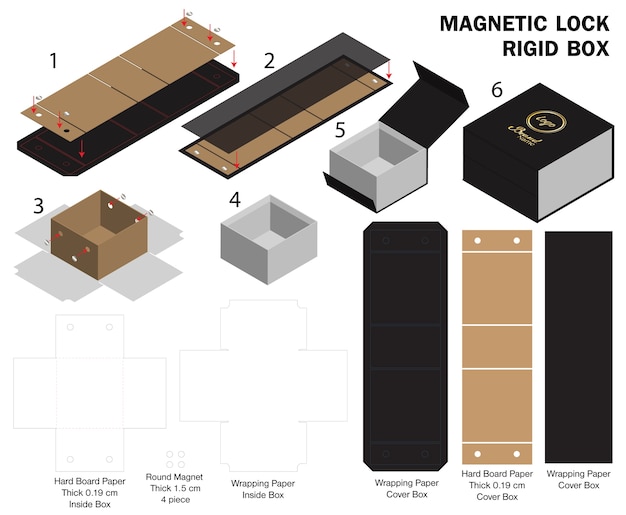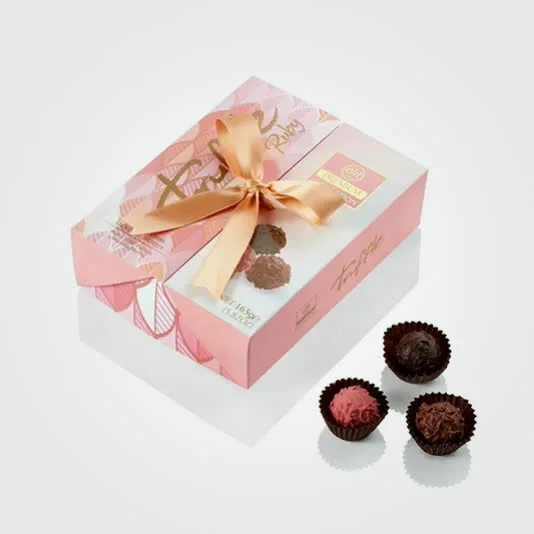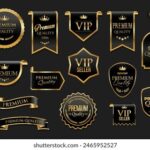The Best Colors for Product Packaging
Do Customers Love Your Brand? Color Can Make the Difference
Product Packaging encompasses much more than merely safeguarding the item; it elevates the entire customer experience. It is an experience in itself. When someone comes to collect their order, let them have an extravagant, personalized, off-the-beaten-track package. Let that be all the adjectives to create that moment-a moment rather than a mere purchase. That necklace, scarf, or T-shirt wrapped in holiday cheer adds a teeny bit of thrill to the buyer. Packaging and product have bonded and evoked the emotion because equal care was given to the wrapping.
First Things First
For the design of a box, the best colors are usually determined by the purpose of the product being packaged. There are specific colors that imply certain designs or products; some examples are:
Red:Perhaps red appeals to food, most often in newer, raw foods. It accompanies energy by being somehow passionate. White or black: if you want a theme that usually goes well with minimalist design , your industry is most likely really competitive. In particular, black means control and therefore says to the consumer that, in a plethora of retail choices, this brand is most trustworthy. White is synonymous with being pure, so it can blend really well into household detergent and other cleaning agents.
Red is especially enticing when it comes to food, as it is ubiquitous among some fresh and natural foods—energy and stimulation, or passion. Minimalist designs would suit you were you to take either white or black. Competition may prove quite stiff for your industry. More importantly, black means control and chances are the other retailers will see her as the most trustworthy option. White has forever been identified with cleanliness, which could be a plus for any household detergent or cleaning agents.
Green and brown:Such hues are very likely to be understood to denote ethically sourced and environmentally friendly products. Select the right tone appropriate for the products sold and Mark brand message.

Blue:Peace and trust are more associated than reliability with the soothing qualities of blue color. Although this color has water-related associations from culture, the shade spectrum blue presents makes it suitable for many products.
Color Psychology in Marketing
Depending on what type of cardboard box design you’re talking about, questions arise about which of their brand colors to favor. The colors of the brand are one of the foremost characteristics making up a brand identity, which makes the selection of the right colors for the packing of their products very important.
If you’re looking to break into a brand new color scheme for your packaging, apply to the existing schemes of current logos and use your shades and sizes. Below are the effects of colors to various products:
Red
Red compels the most attention, energizing people with forms and reflections in making an action or a reaction toward a choice. While red stoplight signals, quicken the actions of motorists, red becomes the most preferred color for the “buy” buttons to strike up attention toward the last action. A bright red and easily perceivable red have that striking energy-for brands.
Red colors also advertise certain spices and sauces, and in this case also, it falls under the food service industry. Since red is the color of many fruits and vegetables like apples and tomatoes, so it is fruit and vegetable advertising fresh vegetarian or vegan products. It has also made inroads to candy and thus stimulates consumers to choose it along with their other food favorites.
Black
If you want to apply the term to a color that is really in the market, black could be a name. It pops out and will mix and match with any other color to achieve the desired appeal. Black is mainly used to elevate luxury products or hint at authority.
The neutrality that blackness has and the fact that it is attention-grabbing make it an all-time choice in various industries. The media and publishing have blackness associated with ink and the typewritten word. That black lettering can also stand out and be legible as color would be used to create a high contrast with advertising to promote a very simple, straightforward product or service.
White
Crossed with symbolism for its age: White was an immaculate and innocent color exceptionally touted for all marketing on the same theme. In fact, white textiles or objects are so impeccably clean, unstained, and surely classic.

Happen to absence all other colors-white is a blank page; neither does it be for one’s self. For marketing, this is neutrality, with an invitation to consumer creative risk.
Green
Green, like blue, has a calming effect and soothes the soul and spirit with very strong healing properties. Its association with the natural environment and plants gives it a very positive overall association with companies and businesses engaged in sustainable missions and environmentally-friendly product lines. Due to its associations with the financial industries, green evokes feelings of wealth and abundance in consumers.
Brown
Brown, a rustic shade, gives a natural look of any logo to be associated. This idea is somewhat further than any product falling under edible or beverage with the same shade, unconsciously implying promises concerning chocolate and coffee. In addition, brown is recognized by businesses concerned with the environment and sustainability and sounds best at promotions.
Blue
You might be aware or not that blue instills a sense of trust in your business; however, darker the blue shade, higher the seriousness with which it would be looked at your products. So we suggest a heavy navy for sleek appeal geared towards working professionals or older shoppers but turquoise or lighter tones of just blue are for that holiday spirit or younger crowd.
Blue is a gender-neutral color, which can be found equally attractive to both men and women, and hence can be core-choice in gender-neutral products because it represents a universally recognized color.
Marketing Colors by Industry
Product-packaging color selection variations may range from industry to industry and thus attract consumer choice. When used in conjunction with shades that support its marketing effort, it will strengthen a product’s identification within a certain field.
Food and Beverage
Reg, a normal color in the food industry, and green is the color of the food industry’s color normal. Green colored packaging, according to research, generally indicates healthy and organic foods. Red, on the other hand, mostly indicates fast food or luxury products related to consumables. Blue is generally connected with pharmaceuticals for trust governance and credibility; however, it can also state goods in food and beverage that are fun or innovative..
Beauty
Usually, colors in the cosmetics industry reflect the gender direction of the audience. Pinks and pastels are assigned to female consumers, while blues and brighter colors are chosen for male ones. Colors may also be indicative of the contents: black or gray may be used to conceal the production of activated charcoal, while green, yellow, and orange may indicate the brightening or cleansing of the beauty themselves.
Electronics
In the most part, it dwells into the neutral—whites, blacks, and grays-with some brands, even, have moved toward use of color to break the category. It’s popular here when those kinds of offerings become metallic—reflective, offering the opportunity to experience futuristic technology. Neon or other ordinarily bright tones may be used by electronic brands appealing to a younger, hipper audience.
Plain White Versus Plain Brown…Versus Color
Colors are emotional sparks within oneself; thus, packaging design becomes a giant marketing tool for creating and retaining brand loyalty. Whether it’s a tiny boutique or giant powerhouse-finding a way to describe that feeling when unboxing something is almost as important as the feeling about actually using it.
Color or design will evoke an emotion, memory, or thought in the person. The physiological reaction to color can quicken heart rates, induce feelings of calm or anxiety, etc. Blue may create a winding stairway of emotional responses: sadness, calmness, or invites memories from the unforgettable beach vacation last year. Yellow is an uplifting color, but it reminds one of caution. Apparently, one rationally selects an idea, product, or anything. The evidence, however, shows how irrational variables now govern decision-making, preferences, likes, or dislikes-they simply take over.
So I’ll Need a PhD in Color Psychology?
It is not a prerequisite: One need not be a nut on colors or even hold a design degree, to select the right color for designing a product. Here are three tips for you to pack something that will bring forth an emotional response.
It is neither necessary: You do not need to be a color fanatic, or have a degree in design to choose the right color for designing a product. Here are 3 tips to pack something emotionally:
1.) Check out the Color Wheel
So go ahead with your combinations! For example, combinations of green and oranges, yellow, and orange could give that soft and mellow autumn feel. These colors are analogs: one finds three side-by-side colors on the wheel. A complementary color scheme-two colors that sit directly across from each other on the color wheel-would really enliven a product.
Try red-purple and yellow-green-from which you can derive.Using a color wheel as a link to chromatic relationships, packaging layouts combining color and pattern may develop color harmony. It will validate most of the intuition and experience that you have had with color. In other instances, it may intervene and stop those jarring or disappointing color combinations so characteristic of judging orchids-for a determined brand and daring audience.
2.) Use the Panda Scientist Gallery
The talk was on colors when we made the discussion about custom boxes. Panda Scientist allows you to pick your preferred custom-printed designs while having control over options. Infinitely color customization is catered for in the case of already designed patterns. You can customize your boxes with tags, images, logos, etc., using the Flex Editor. Your brand is really you. You can filter by box design by size, theme, color, and purpose. Color is the difference; it is human.
Anything and everything custom, conversely, begins to play even as color becomes an issue. You may have direct input into choosing your custom-printed design while the ready-made pattern allows for unlimited color customization. You can apply tags, images, logos, and so on via our Flex Editor to make these boxes uniquely yours. The brand is really you. Filter the box design by size, category, color, and functionality. Human-made decisions are made by color; make your choices.
3.) Create a Personal Touch
Customer service is in large part what makes a relationship with a brand “loveable,” with 73% of customers, according to the U.S. Small Business Association, saying so. That unique colorful box with conversations of customer service could very well be that one aspect holding the same loyalty as with dearest friends. There are a few brands for which the box or packaging is an iconic landmark. Tiffany’s certainly comes to mind. Despite everything you may hear, Millennials have been the most loyal generation among all generations. They want to buy-and keep on buying-from brands and owners that offer a personalized human touch.
However, it is the specialized service that we pride ourselves in. We like you to turn your business upside down here at Panda scientist. We would like to help you brand your business in a way that brings just one type of emotion to it-the emotion that makes consumers come back for more-joy: pure, colorful, gleefful joy. To find out how it all works, go to Panda Scientist. Let’s get started.






